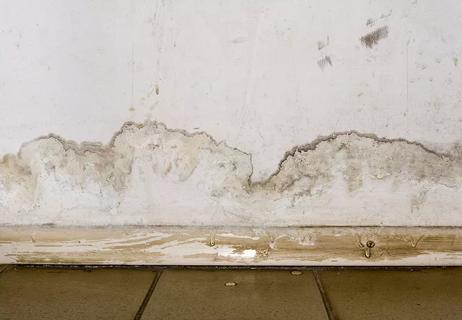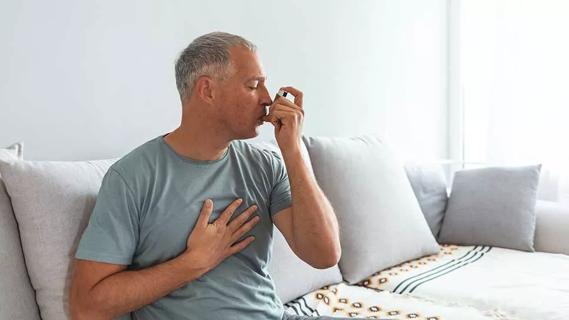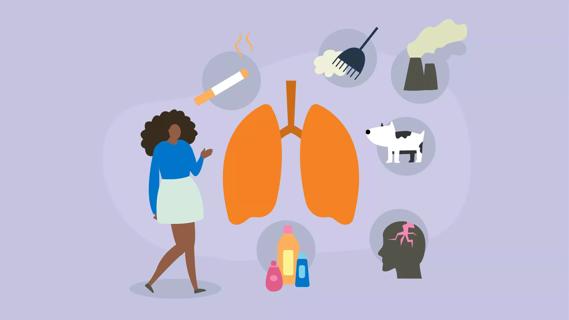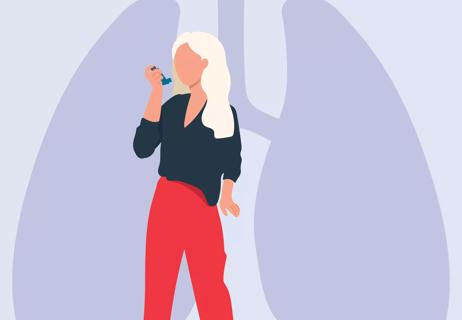Practical tips to limit breathing trouble

Mold, a fungus that reproduces through mold spores, can be found anywhere – on shower curtains, in your basement, even on the siding of your house. It grows in almost any color, and it thrives in damp, warm, humid places, sprouting up year-round. If you’re exposed to it, you could develop breathing problems, from mild to severe.
Advertisement
Cleveland Clinic is a non-profit academic medical center. Advertising on our site helps support our mission. We do not endorse non-Cleveland Clinic products or services. Policy
There are many potential symptoms and diseases that can result when you’re exposed to mold. These include everything from allergic reactions and asthma to a rash on your skin. And no one is immune. In fact, critical care pulmonologist Lamia Ibrahim, MD, says mold can be responsible for breathing problems in almost anyone.
“There’s sufficient evidence to link mold exposure with upper respiratory tract symptoms – coughing and wheezing – in otherwise healthy people, as well as linking it to asthma symptoms in people with asthma,” she says.
Experts also say there’s a potential link between early mold exposure and the development of asthma in some children, especially those with a genetic susceptibility to developing the condition.
However, mold-induced breathing problems are temporary for the most part, and symptoms usually fade with less exposure to the fungus.
Molds alone don’t usually cause many health problems. It’s when they land on damp surfaces and reproduce that you feel their nasty health effects.
Mold spores produce allergens — substances that can cause you to have allergic reactions — resulting in hay-fever-like symptoms: itchy, red eyes, runny nose and asthma. If these persist, you can develop respiratory infections. It’s rare, but exposure to mold spores can eventually cause organ damage, cognitive difficulties and even death.
Advertisement
What’s more, mold spores can irritate your lungs even if you’re not allergic to mold. When introduced to your body, spores irritate your airways in your nose, mouth and throat, Dr. Ibrahim says. They can also cause burning and bleeding if they become lodged in your mucus membranes, such as in your sinuses and lungs.
But, not everyone responds to mold exposure the same way. Your symptoms may be different from others and can range from mild to severe. Children, older adults and immuno-compromised individuals are at greatest risk for developing breathing problems. People with severe mold allergies can develop fever or shortness of breath.
Symptoms can include:
A rare inflammatory lung disease called hypersensitivity pneumonitis can also result from mold exposure. Symptoms include cough, difficulty breathing and fever. You usually develop this condition after mold exposure at work, but it can result from home exposure as well, Dr. Ibrahim says.
To know how to protect yourself, start by knowing where mold spores thrive. Besides growing best in warm, damp, humid spots. Outside, you’ll find mold in shady, damp areas or where leaves or other vegetation break down. Inside, mold grows in high-humidity locations, such as basements and showers, she says.
“If you are prone to breathing problems, such as asthma, you should consider limiting exposure to damp, humid areas such as basements and saunas, she says.
Here are other things you can do to minimize your mold exposure risk:
If you have symptoms, and you’ve been exposed to mold at work, on a trip or at home, you should consult your doctor immediately, Dr. Ibrahim says. Tell your provider all that you can about the mold and the location.
“Be sure to mention all symptoms you may have, no matter how trivial they may seem. There are no insignificant symptoms when you’re being evaluated for a new problem,” Dr. Ibrahim says. “Pay close attention to symptoms that are only present or worsen at home or other public areas where mold is common.”
Advertisement
Learn more about our editorial process.
Advertisement

Housecleaning tips for allergy and asthma sufferers

Often, a throat tickle is due to a cold, allergies or GERD — but see a doctor if it won’t go away

Both conditions have similar symptoms, but different causes and treatments

The effectiveness and safety of many of these options are unknown, so it’s best to stick to traditional care

Avoid triggers like dust, smoke and cold air to lessen your chances of coughing

Developmental changes like puberty and menopause can impact symptom severity

Symptoms may lessen over time, but the condition never truly goes away

People with certain pre-existing medical conditions have increased risk factors

Type 2 diabetes isn’t inevitable with these dietary changes

Applying a hot or cold compress can help with pain